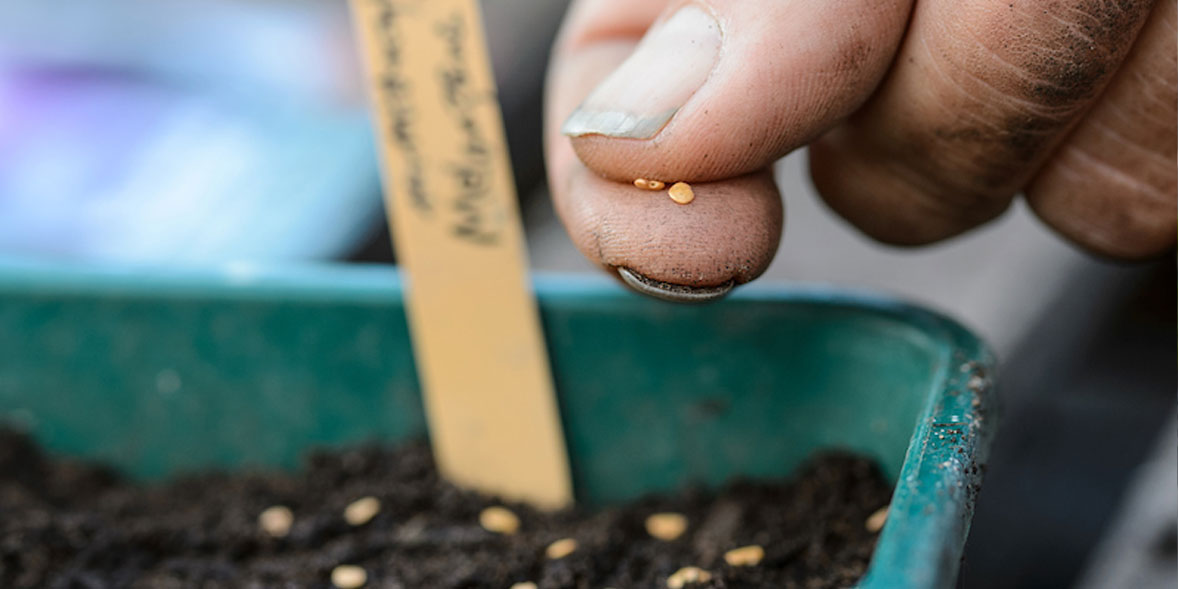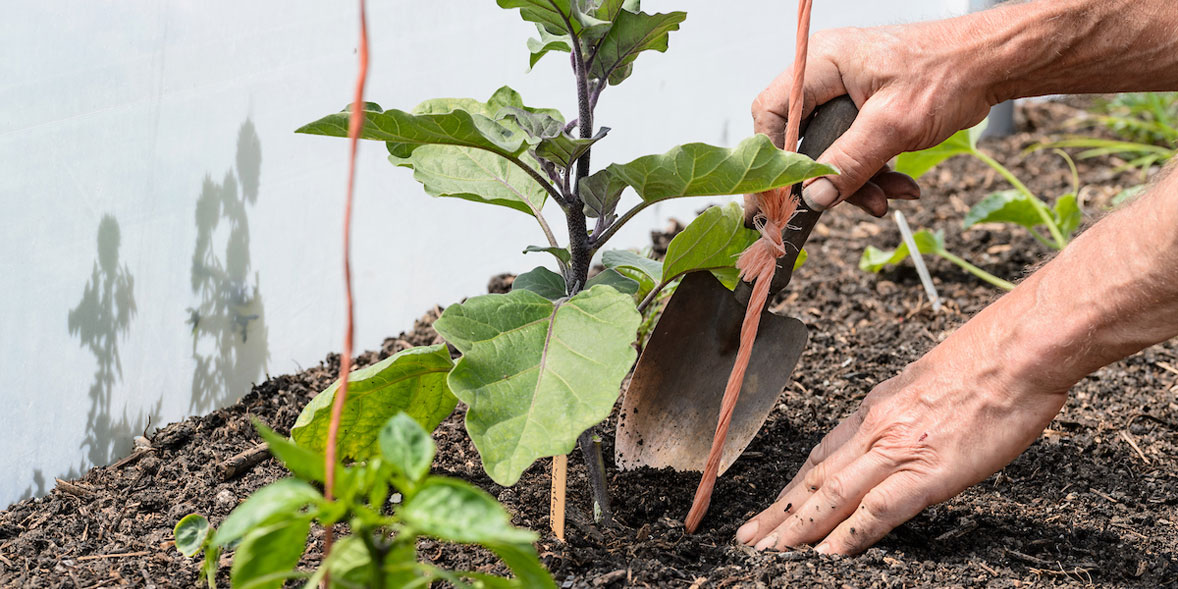
25% off Which? Gardening
Pay £36.75 for the first year and get the garden you want for less
Get this offerBy clicking a retailer link you consent to third party cookies that track your onward journey. If you make a purchase, Which? will receive an affiliate commission which supports our mission to be the UK's consumer champion.

Aubergines produce their crops most reliably when grown in the greenhouse, but can be grown in a pot in a sheltered, sunny spot outdoors.
Breathe new life into your outside spaces. Sign up for our Gardening newsletter, it's free monthly
| January | February | March | April | May | June |
| SOWING | SOWING | SOWING | PLANTING | PLANTING | |
| July | August | September | October | November | December |
| HARVESTING | HARVESTING | HARVESTING |
Which? members can log in now to see the full results and which are our Best Buy varieties. If you’re not a member, join Which? to get instant access.
| Variety name | Pest & disease | Days to first harvest | Yield | Fruit quality | Appearance | Flavour | Bitterness | Texture | Overall rating |
| 'Black Beauty' | |||||||||
| 'Bonica' | |||||||||
| 'Brilliant' | |||||||||
| 'Czech Early' | |||||||||
| 'Diamond' | |||||||||
| 'Falcon' | |||||||||
| 'Giotto' |
| Variety name | Pest & disease | Days to first harvest | Yield | Fruit quality | Appearance | Flavour | Bitterness | Texture | Overall rating |
| 'Gretel' | |||||||||
| 'Hansel' | |||||||||
| 'Orlando' | |||||||||
| 'Snowy' |
| Variety name | Pest & disease | Days to first harvest | Yield | Fruit quality | Appearance | Flavour | Bitterness | Texture | Overall rating |
| 'Amethyst' | |||||||||
| 'Clara' | |||||||||
| 'Galine' | |||||||||
| 'Jackpot' | |||||||||
| 'Kaberi' | |||||||||
| 'Kermit' | |||||||||
| 'Ophelia' |
Best Buys are highlighted in red. Recommended varieties are in blue. OVERALL RATING Ignores prices and is based on: yield 20%, flavour 20%, germination and growth of theyoung plants 15%, garden worthiness 15%, fruit quality 5%, appearance 5%, bitterness 5%, texture 5%, days to first harvest 5%, red spider mite damage 5%. Days to harvest is the number of days after transplanting the young plants to their final pot before the fruit could be harvested, ★★★★★ = 47 days to ★ = 83 days. Yield based on the number and weight of fruits from five plants. Texture takes into account the firmness and juiciness of the flesh, the presence of annoying seeds and the thickness of the skin when cooked.

Pay £36.75 for the first year and get the garden you want for less
Get this offerSow the seeds from February to April, placing seeds 6mm deep into a pot or tray of Best Buy compost for sowing seeds. Keep them moist and at a constant temperature of 20°C. Seedlings should germinate within 8-21 days. They can be moved to individual pots of a Best Buy compost for raising young plants when they have two strong leaves - roughly 10-14 days after they germinate.
Try a Best Buy pop up greenhouse

As the seedlings get larger, gradually reduce the temperature to 14°C minimum at night and pot them on into larger pots (2L), using a Best Buy compost for containers mixed with a Best Buy controlled-release feed. They need good light and heat so you may want to look into LED grow lights to avoid your plants becoming leggy and weak.
Grafted plants are more expensive but they are more vigorous than seed-raised plants and tend to produce a more reliable crop of good-sized aubergines. They arrive as small plug plants in early April, a little later than if you buy non-grafted plants, because of the time taken while grafted stems are joining to their new roots in the nursery. Pot them on immediately into a 7cm pot, and keep them as warm as possible. By late April you can repot to a 10cm pot, ahead of transplanting into their final position 10 to 14 days after that.
When the last frost date in your area (usually mid- to late May) has passed and then you can plant in an unheated greenhouse. They can go in large pots, growing bags or in the ground. If planted in a large pot, use a Best Buy compost for containers and mix in a Best Buy controlled-release feed. They should go in about 45-50cm apart. Plants can go in deep, as with tomatoes you can bury about 5cm of stem.
Learn how to buy the best greenhouse

If growing plants as cordons (ie on one stem), you can place two strings with knotted ends in the planting holes to act as a support.

Plants for growing outdoors can be put outside about two weeks after those under cover. Aubergines are very sensitive to frost, though, so if fruits are still developing in September, move outdoor plants back under cover at night.
Just like with tomatoes, you can train aubergines as a cordon (ie one stem) so that the plant's energy is channelled into making fruit. Remove the sideshoots that appear between the main stem and the leaves.
Learn which are our Best Buy garden gloves

Water about two or three times a week in summer for plants in the ground; daily for plants in pots or growing bags, which dry out more quickly. Try to water at ground leaves rather than wetting the leaves. Feed fortnightly with a liquid fertiliser, such as tomato feed, after the first flowers form.
Make things easier with a Best Buy garden irrigation system
Harvest in: July to September
Unripe fruits tend to be softer. Ripe fruits are harder and the skin changes from glossy to matt. When they’re ready, cut them off.
Try our Best Buy secateurs

Inspect the undersides of the leaves for the characteristic flecking left by red spider mite and look for pale, mottled leaves and fine webbing. If they do appear, use a biological control agent, such as phytoseiulus or amblyseius. These predatory mites will feed on the pest and deal with the problem for you.
Read more about red spider mite.
Blossom end rot causes large circular blotches at the bottom of the fruit. Water plants regularly through the hottest period to prevent this from happening.
We sowed 12 seeds of each variety indoors in mid-March and pricked them out into 9cm pots from mid to late April. We recorded how many of the seeds germinated and how well the seedlings grew as we potted them on into 10.5cm pots. We moved the five strongest plants into their final 24cm pots towards the end of May. The aubergine plants were kept inside a polytunnel throughout the trial and we used drip irrigation to ensure that they were watered regularly. We started feeding the plants weekly with liquid plant feed once they produced their first flowers and noted how long it took for their first fruit to be ready to harvest. We monitored the weight and number of fruits that the plants produced, checking how uniform in size and colour they grew until the end of September. We also kept an eye out for the signs of problems with red spider mite and powdery mildew. Finally, our Which? Gardening experts conducted a taste test, rating the fruit’s appearance when raw and cooked, and assessing the taste, texture and bitterness of each variety.